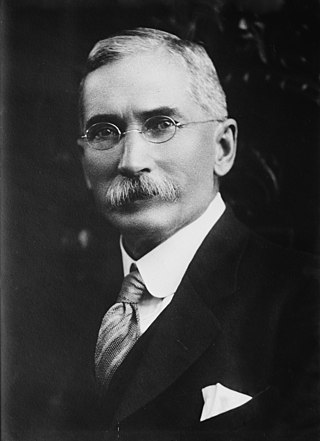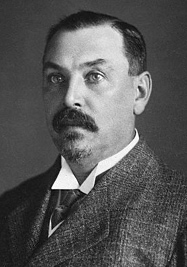
The Government of Ireland Act 1920 was an Act of the Parliament of the United Kingdom. The Act's long title was "An Act to provide for the better government of Ireland"; it is also known as the Fourth Home Rule Bill or (inaccurately) as the Fourth Home Rule Act and informally known as the Partition Act. The Act was intended to partition Ireland into two self-governing polities: the six north-eastern counties were to form "Northern Ireland", while the larger part of the country was to form "Southern Ireland". Both territories were to remain part of the United Kingdom of Great Britain and Ireland and provision was made for their future reunification through a Council of Ireland. The Act was passed by the British Parliament in November 1920, received royal assent in December and came into force on 3 May 1921.

Field Marshal Jan Christian Smuts, was a South African statesman, military leader and philosopher. In addition to holding various military and cabinet posts, he served as prime minister of the Union of South Africa from 1919 to 1924 and 1939 to 1948.

Sir Patrick Duncan, was the sixth Governor-General of the Union of South Africa, holding office from 1937 until his death in 1943.

The United Party was a political party in South Africa. It was the country's ruling political party between 1934 and 1948.
Liberalism in South Africa has encompassed various traditions and parties.

The Cabinet of South Africa is the most senior level of the executive branch of the Government of South Africa. It is made up of the president, the deputy president, and the ministers.
The following lists events that happened during 1948 in South Africa.
The Unionist Party was a pre-apartheid South African political party, which contested elections to the Union of South Africa parliament from the 1910 South African general election until its merger into the South African Party just before the 1921 South African general election.
The South African Party was a political party that existed in the Union of South Africa from 1911 to 1934.
Jan Christiaan Smuts, OM served served as Prime Minister of the Union of South Africa from 1919 to 1924 and from 1939 to 1948. He played a leading part in the post war settlements at the end of both world wars, making significant contributions towards the creation of both the League of Nations and the United Nations.

General elections were held in South Africa on 10 March 1920 to elect the 134 members of the House of Assembly. This was for the third Union Parliament.

General elections were held in South Africa on 18 May 1938 to elect the 150 members of the House of Assembly. The United Party won an absolute majority.

General elections were held in South Africa on 7 July 1943 to elect the 150 members of the House of Assembly. The United Party of Jan Smuts won an absolute majority.

The South African Labour Party, was a South African political party formed in March 1910 in the newly created Union of South Africa following discussions between trade unions, the Transvaal Independent Labour Party, and the Natal Labour Party. It was a professedly democratic socialist party representing the interests of the white working class.
Although the Democratic Alliance of South Africa in its present form is fairly new, its roots can be traced far back in South African political history, through a complex sequence of splits and mergers.

The Volksparty (VP) was a short-lived South African political party from 1939 to 1941.
The Dominion Party was a South African political party establish in late October 1934 by dissatisfied members of the South African Party when that party fused with the National Party to form the United National South African Party, commonly referred to as the "United Party".
J. B. M. Hertzog became the Prime Minister of South Africa on 30 June 1924, replacing Jan Smuts. Hertzog led four cabinets, serving until 5 September 1939.
Jan Smuts became South African Prime Minister for the second time in 1939, following a split in the United Party. He appointed members of the United Party, Dominion Party and Labour Party to positions in his Cabinet.

The Louis Botha government appointed the members of the government in South Africa led by Prime Minister Louis Botha between 31 May 1910 and 3 September 1919.
This page is based on this
Wikipedia article Text is available under the
CC BY-SA 4.0 license; additional terms may apply.
Images, videos and audio are available under their respective licenses.














